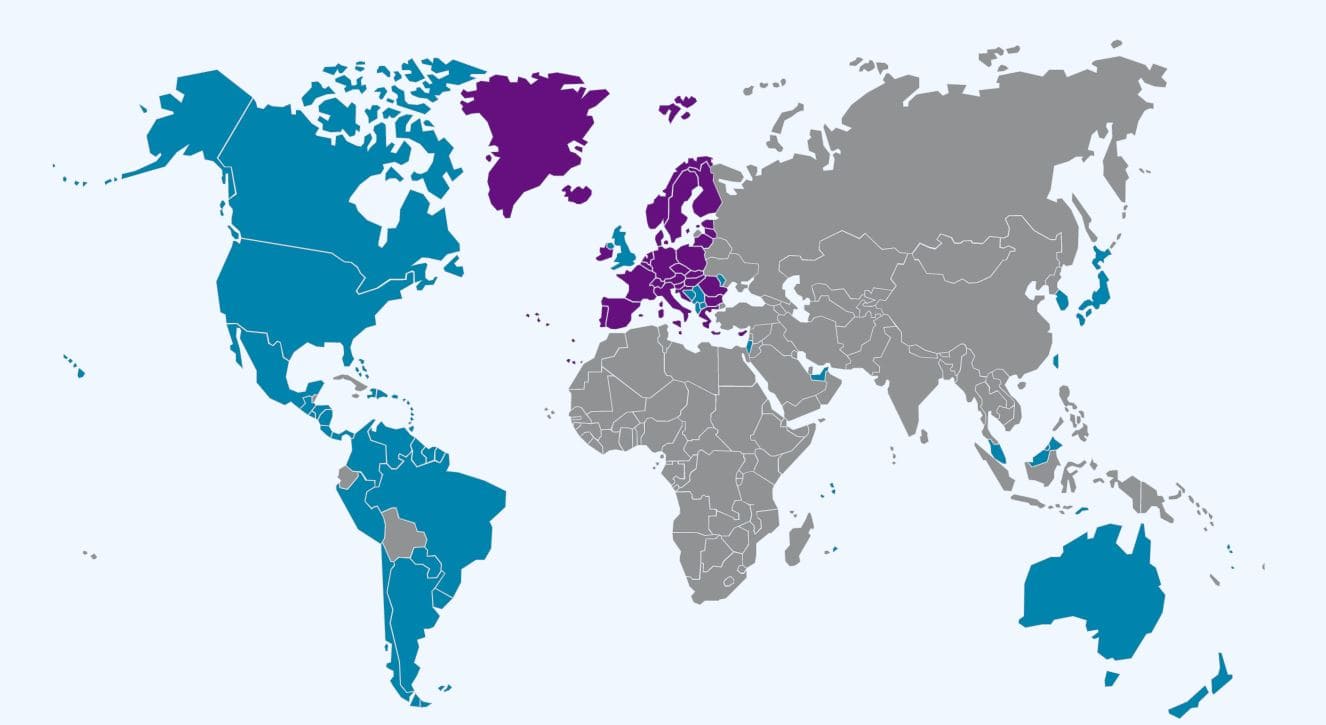The Schengen Information System (SIS) is an important European security system. Most travellers will be unaware that SIS exists. However, it is vital for combating crime, illegal immigration, and terrorism.
SIS helps to boost security in the Schengen Area by sharing information between participating countries. This is important given that there are no border checkpoints between member states.
The Schengen Information System was renewed in March 2023 to better provide more complete information and enhance border management.
More information about SIS and the latest updates are provided below.
WHAT IS THE SCHENGEN INFORMATION SYSTEM?
The Schengen Information System (SIS) is the largest European information sharing system. It is maintained by the European Commission.
SIS was created in 1990 when internal border controls between Schengen countries were abolished and a common visa policy was introduced, in line with the Schengen Convention.
The Schengen Information System is used by authorities in European countries, such as police and border control agents. Information about individuals or objects can be added to the database and this data can then be checked by authorities in all other participating countries.
WHAT DOES SIS DO?
The Schengen Information System exists to keep Europe safe.
In the absence of internal border checks between countries in the Schengen Area, SIS is used to assist authorities in the member states to maintain security.
It does this in 3 ways:
- Border control cooperation: border control authorities can create alerts regarding nationals of non-Schengen countries trying to enter the Schengen Area.
- Law enforcement cooperation: alerts can be created about missing persons and about individuals and objects of interest to a criminal investigation.
- Cooperation on vehicle registration: information on vehicles, number plates, and registration certificates can be shared between different national authorities.
Information is stored as alerts. EU authorities can search SIS to see if they get a hit.
Alerts are shared across all participating countries, enabling multiple authorities to identify and/or locate persons or objects of interest.
WHAT IS A SCHENGEN INFORMATION SYSTEM ALERT?
Authorities can use the system to check for alerts on particular individuals or items, or create new alerts after an incident.
When an alert is created, the following data must be entered:
- Subject of the alert (the person and/or object)
- Why the person or object is sought after
- The action that should be taken once the subject is located
REASONS SIS ALERTS CAN BE CREATED
Alerts can be created to help identify the following:
- Individuals wanted for arrest
- Non-EU nationals who have been refused entry or stay in any Schengen country
- Missing persons
- Individuals whose assistance is required for judicial proceedings
- Objects to be seized or used as evidence in criminal trials
- Persons and objects for discreet or specific checks, e.g. for prevention of threats to public or national security.
NEW ALERTS ADDED TO THE SCHENGEN INFORMATION SYSTEM IN MARCH 2023
The Schengen Information System was upgraded in March 2023. The renewed version includes preventative alerts to protect children at risk of abduction and other vulnerable people.
WHO CAN USE THE SIS?
The Schengen Information System can be used by the following authorities in member countries:
- Police
- National border control
- Customs officers
- Visa and immigration officials
- Judicial authorities
- Europol
- Eurojust
- Vehicle registration authorities
- Europol and national immigration authorities (since March 2023)
- Frontex (access granted, implementation ongoing)
WHICH COUNTRIES USE SIS?
SIS is used by the Schengen countries (EU member states plus Iceland, Liechtenstein, Norway, and Switzerland.
Bulgaria and Romania also have full access to SIS now that they are Schengen members.
Cyprus, which is obliged to join the Schengen Area, connected to SIS in summer 2023.
SCHENGEN INFORMATION SYSTEM RENEWED AND ENHANCED
The renewed version of the Schengen Information System, launched in March 2023, includes several notable features.
- New alert categories and increased data sharing
- New types of biometrics to locate and identify people (palm prints, fingermarks, palm marks)
- Extra tools to prevent serious crime and terrorism
- Extra tools to protect children and vulnerable adults
- Extra tools to stop irregular migration
- Europol, national agencies and Frontex gain access
HOW DOES SCHENGEN INFORMATION SYSTEM AFFECT MY TRIP TO EUROPE?
The Schengen Information System has no noticeable effect on most travellers arriving in Europe. The security it provides helps to reduce the risk of incidents while travelling to Europe by preventing crime and terrorism.
The SIS will only affect travellers who are sought after by authorities in the participating European countries, including:
- Wanted criminals or suspects
- People who have been involved in or witnessed a criminal incident in Europe
- Individuals listed as missing persons
- Individuals transporting stolen property
- Individuals who have previously been denied entry to or deported from a Schengen or EU country
- Travellers who require protection
In addition, visitors who commit any sort of offence during their stay may have an SIS alert created for them, which could cause issues with any future visit to Schengen and EU countries.
The majority of visitors should have no problem crossing the international border into the Schengen Area as long as they have the required documentation and meet the entry conditions.
SIS, THE EES AND ETIAS FOR A SAFER EUROPE
The Schengen Information System is one part of the EU’s interoperable border security measures.
It works together with the upcoming Entry/Exit System (EES) and European Travel Information and Authorisation System (ETIAS).
The EES registers third-country nationals entering and exiting the Schengen Area.
ETIAS will become available in 2026 . It is the new travel authorisation for visa-exempt non-EU visitors. Check the ETIAS requirements to see if you need to apply for ETIAS.
Together, these 3 systems improve security for EU citizens.
FACTS ABOUT SIS
Here are 3 interesting facts about the Schengen Information System.
- It is managed by eu-LISA eu-LISA is the European Union agency responsible for large-scale IT systems. It also manages the Visa Information System (VIS) and Eurodac and is developing the EES and ETIAS.
- Millions of searches every day According to the official eu-LISA website, an average of 20 million searches in the SIS are made each day.
- Paperwork alerts are the largest category Alerts on passports, ID cards and other documentation make up the largest category within the SIS.
SCHENGEN INFORMATION SYSTEM KEY DATES
- 2023—Renewed SIS
The renewed SIS starts operation with new categories of alert and greater potential to prevent crime and protect vulnerable people.
- 2019-2021—Preparations made
Preparations for the new Schengen Information System made, including legal and technical preparations.
- 2018—Strengthening of SIS
The European Parliament and the Council adopt 3 new regulations aimed at enhancing the SIS, such as the expansion of data categories and biometric data, and improving the system's overall effectiveness.
- 2013—SIS II
The second generation of the Schengen Information System, SIS II, is launched in April 2013, with increased functionality, security features, and data categories. It replaces SIS I.
- 1995—SIS I
SIS is created after internal border controls are abolished in the EU.



